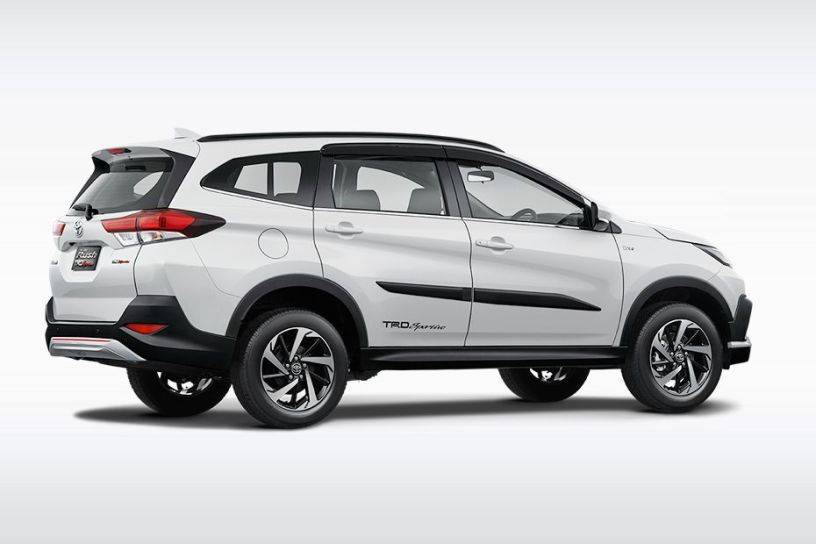Opinion: Why the Toyota Rush won't launch in India
Toyota would have to rework this motor to help it comply with the new emission norms set to be enforced by 2020.

The Toyota Rush appears to be a very logical launch for the Indian market. After all, SUVs are in high demand and the trend is showing no signs of slowing down. Additionally, Toyota doesn't even have an SUV in India below the Fortuner. And buyers have shown strong and sustained interest in the Toyota Rush. The Rush is a 7-seater that has the size quotient on its side, gets an expansive features list and even fared well in the ASEAN NCAP crash tests.
However, insider sources have repeatedly stated that the Toyota Rush isn’t coming to India. So why is that?
#1 Diesel Dilemma
The 2018 Toyota Rush has been introduced in markets like Indonesia and South Africa, with a launch expected in Thailand too. However, in all these markets, the Rush gets a 1.5-litre petrol engine, good for about 104PS of power and 136Nm of torque.

Internationally, the Rush is priced in the same range as the Hyundai Creta and Renault Captur i.e. the Rs 10-15 lakh SUV space. At present, this segment is largely driven by diesel engines in India; something the Toyota Rush doesn’t have.
Why not introduce the 1.4-litre diesel currently used in the Etios and Corolla Altis? Toyota would have to rework this motor to help it comply with the new emission norms set to be enforced by 2020. That would require some R&D and manufacturing spend. Given that diesel engines are losing popularity in other segments below the Rush, Toyota might not want to have a diesel engine in its portfolio for just the Rush.

The gap between petrol and diesel prices is also on the decline. This, in combination with the upcoming emission norms, already has buyers second guessing the purchase of diesel vehicles. As a result, there’s no saying if diesel will maintain its popularity in the midsize SUV segment in the future. The Toyota Yaris, for example, doesn't get a diesel engine option as Toyota maintains there isn’t enough interest for it.
#2 Old School Issues
While people do love SUVs, pseudo or real, the majority wants their SUV to have car-like driving characteristics. This means they want the stability, ease of driving, handling and ride quality similar to that of a sedan or hatchback.
Body-on-frame SUVs like the Toyota Rush, for the most part, don’t ride and handle as well as unibody SUVs like the Hyundai Creta or the Renault Duster. They have more body roll, tend to have a bouncy ride quality and don’t handle as well.
#3 The C-HR

Another reason why the Rush isn’t here yet is because Toyota may have a better option in mind. The Toyota C-HR is one of the first new products to be based on the TNGA (Toyota New Global Architecture) platform. This crossover is not only more modern but also looks the part with its stand-out styling. Contrarily, the Rush does have some MPV-like elements in its design, which may not click with everyone, especially younger buyers.
In fact, while the Rush has been a long standing rumour, the C-HR has actually been spotted on test in India, indicating that it is the brand’s weapon of choice. It would bring something new to the segment, giving Toyota a differentiator in the space. Importantly, future Toyota products will be based on TNGA, so starting with the C-HR seems like a more sound move in the long term.

However, the Toyota C-HR will fall into a slightly higher price bracket, with prices starting around Rs 15 lakh. This would slot it at par with the top variants of the Hyundai Creta and rivals would include the Jeep Compass and Hyundai Tucson as far as prices are concerned. If launched, the C-HR could come powered by a 1.8-litre petrol-hybrid powertrain that’s good for 122PS of power. Our real world tests have proven that hybrids can be as fuel efficient as diesels (Read: Honda Accord Hybrid vs Toyota Camry Hybrid). And, in fact, even the C-HR which was spotted in India, was a hybrid too.
Toyota’s SUV plan is slowly falling into place. At the expensive end of the spectrum, it already has the Toyota Fortuner while its association with Suzuki will birth a Toyota-badged version of the Maruti Suzuki Vitara Brezza. So what would you like to fill the gap? Let us know in the comments!
Disclaimer: This article has not been edited by Deccan Chronicle and is taken from a syndicated feed. Photos: CarDekho.

